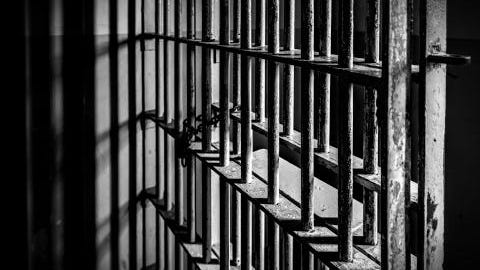By Anne Blythe
This has been a summer of intense heat domes, record high temperatures and strained power grids feeding cranked-up air conditioners that are working overtime to cool homes, businesses and other buildings.
As many North Carolina residents seek chilled shelter from stifling heat advisories, warnings and indices expected to top 100 degrees, many in the state’s prison population are confined inside buildings without air conditioning.
In 2021, state lawmakers included $30 million in the approved two-year spending plan to retrofit older prison buildings with cooling systems. In late June, a prison system spokesperson sent out a news release heralding the completion of the first project — one unit at Caswell Correctional Center, a medium-security facility for men.
After the $30 million appropriation two years ago, prison officials put five facilities on their priority list. In addition to the Caswell facility, design work has been completed for four other facilities, according to the news release. They are:
- Albemarle Correctional Institution
- Dan River Prison Work Farm
- Harnett Correctional Institution
- North Carolina Correctional Institution for Women
‘Well-documented problem’
Family, friends and advocates for inmates in the prisons are concerned that more progress has not been made, particularly at the women’s prison.
When the design work started, more than 15,000 beds were not in air-conditioned quarters, according to prison officials. By late June, officials said, construction was in progress to cool 2,900 beds. That still leaves more than 12,000 beds in buildings where the heat can seem oppressive.
Industrial fans are used in buildings without air conditioning to try to keep air moving. In some facilities, inmates have been known to get their clothes wet to make it cooler as they sleep.
“They may have only gotten the money a couple of years ago, but this has been a well-documented problem,” said Susan Pollitt, an attorney with Disability Rights North Carolina who helps represent inmates with disabilities.
As of July 25, there were 30,839 inmates in NC prisons, 2,550 of whom were female. It’s not only the incarcerated people who struggle in the extended heat, Pollitt pointed out. Prison workers do, too.
“This is the hottest summer,” Pollitt added. “We’d be concerned about anybody in this heat.”
Todd Ishee, secretary of the state Department of Adult Correction, said as much in a statement accompanying the news release last month.
“The close conditions in an institutional setting can make the normal heat of a North Carolina summer even more uncomfortable,” Ishee said. “Emotions rise with the temperatures, amplifying the risk of conflict and possibly violence.”
“We’re thankful our Legislature and Governor heard us,” Ishee added, “and that they provided means for us to begin making the state’s correctional system a more accommodating workplace for our correctional professionals and a safer environment for everyone.”
John Bull, a spokesperson for the prison system, said in an email to NC Health News that about 26 percent of the beds at the women’s prison, “a campus-style facility with dozens of buildings,” are air-conditioned.
Working in phases
Bringing air conditioning to the women’s prison in Raleigh is one of the largest projects, Bull said. The work has been broken down into three phases, with the first two scheduled to be put out to bid in August or September, he added. Once that work is done, roughly 1,000 beds on that prison campus will be in air-conditioned facilities.
Through the rest of the summer, inmates at the women’s prison have a “standing offer,” Bull said, to transfer to a fully air-conditioned facility at Anson Correctional Institute.
Since March, 30 female inmates have been transferred to the Anson prison from the Raleigh campus. Not all were related to the lack of air conditioning, Bull added. Some might have requested the move to be closer to family or for other reasons.
Not everyone who asked to go to Anson was allowed to go, Bull said. To be eligible for such a move, the inmate had to have been housed at the Raleigh prison for at least 90 days and have no infractions for the same time period.
Additionally, the women must have completed any vocational classes they were taking and not have medical issues that were so significant that it made better sense to keep them closer to the air-conditioned infirmary on the Raleigh campus.
“Flyers have been plastered throughout the prison complex since March,” Bull said.
Using inmate labor
At some of the men’s facilities, inmates are helping with the installation work through the Construction Apprenticeship Program, or CAP, a project done in conjunction with the NC Community Colleges system. The male inmates in the program, Bull said, would not be working at the women’s prison.
“This initiative is moving as quickly as possible,” Bull added in an email exchange with NC Health News. “Extensive efforts have been made to streamline this initiative so that the projects are designed, bid, contracted, and the work is done as quickly as possible. This is a high priority.”
Not only will retrofitting be required at many of the facilities, many of the campuses will require work in multiple buildings.
“These are not easy projects,” Bull wrote. “A number of these facilities are 70, 80, 90 years old. They weren’t built with air-conditioning systems or designed to accommodate air-conditioning systems.”
This post was originally published on this site be sure to check out more of their content.











